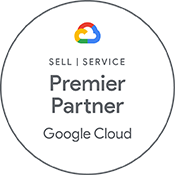 2 day course
2 day course  Partner of the Year
Partner of the Year  Virtual, Private
Virtual, Private  Certificate of Attendance
Certificate of Attendance As an authorized Google Cloud Training Partner, we’ve been selected by Google to facilitate the delivery of this two-day Kubernetes course.
This course features a combination of lectures, demos, and hands-on labs to help you explore and deploy solution elements—including infrastructure components like pods, containers, deployments, and services—along with networks and application services.
You'll also learn how to deploy practical solutions, including security and access management, resource management, and resource monitoring.
Our Architecting with Google Kubernetes Engine course is delivered via Virtual Classroom. We also offer it as a private training session that can be delivered virtually or at a location of your choice in South Africa.
Course overview
Who should attend:
This course is suitable for Cloud architects, administrators, and SysOps/DevOps personnel and any individuals using Google Cloud to create new solutions or to integrate existing systems, application environments, and infrastructure with Google Cloud.
What you'll learn:
By the end of this course, you will be able to:
- Create and manage workloads in Google Kubernetes Engine
- Explain how pod networking works in Google Kubernetes Engine
- Define and work with different Kubernetes storage abstractions
- Describe and manage authentication, authorization, and security in Google Kubernetes Engine
- Monitor applications running in Google Kubernetes Engine
- Explore Google Cloud managed storage services options
- Configure CI/CD pipelines for Google Kubernetes Engine
Prerequisites
To get the most of out of this course, you should have:
- Completed the Google Cloud Fundamentals: Core Infrastructure course or have equivalent experience
Course agenda
- Define, configure, inspect, manage, and update Deployments
- Define what Jobs and CronJobs are in GKE, and explore relevant use cases
- Create and run Jobs
- Explain how to scale clusters manually and automatically
- Configure node and pod affinity
- Explore Kubernetes networking, including Pod and cluster networking
- Create services to expose to applications running within Pods
- Configure load balancers to expose services to external clients. Explore container-native load balancing in GKE
- Configure Google Kubernetes Engine networking
- Define and work with Kubernetes storage abstractions
- Run and maintain sets of pods using StatefulSets
- Use ConfigMaps to decouple configuration from Pods
- Manage and store sensitive access and authentication data
- Configure persistent storage for Google Kubernetes Engine
- Explore Kubernetes authentication and authorization
- Define Kubernetes RBAC and how it works with IAM to secure GKE clusters
- Configure Workload Identity to access Google Cloud services from within GKE
- Secure GKE with Pod Security Standards and Pod Security Admission
- Implement Role-Based Access Control with GKE
- Identify the tools included in the Google Cloud Observability
- Configure the Google Cloud operations suite to monitor and manage the availability and performance
- Inspect logs using the kubectl command
- Inspect Kubernetes logs using Google Cloud Observability
- Configure GKE-native Monitoring and Logging
- Kubernetes Engine
- Contrast managed storage services with self-managed storage
- Identify use cases for Cloud Storage for Kubernetes applications
- Compare the range of Google Cloud managed database services
- Explore Cloud SQL Auth Proxy and how it connects to Cloud SQL from within GKE
- Use Cloud SQL with Google Kubernetes Engine
- Define continuous integration and continuous delivery and identify why it is important
- Examine CI/CD pipelines and how they can optimize app releases
- Explore first-party and third-party CI/CD tools supported by Google Cloud
- Explore Google’s best practices for a GKE CI/CD pipeline


